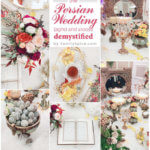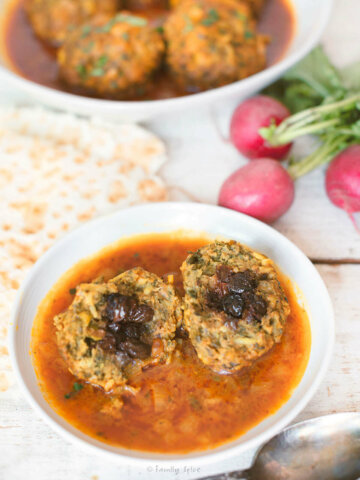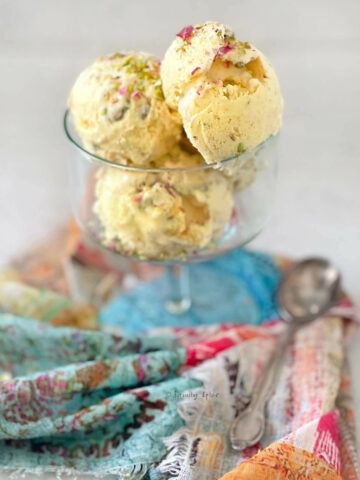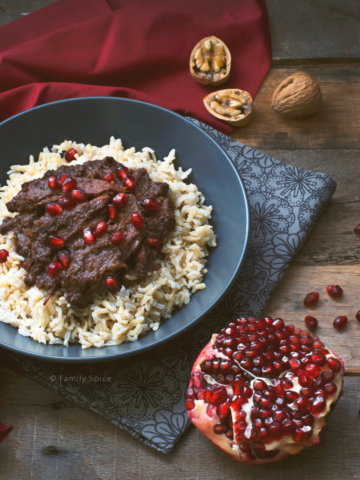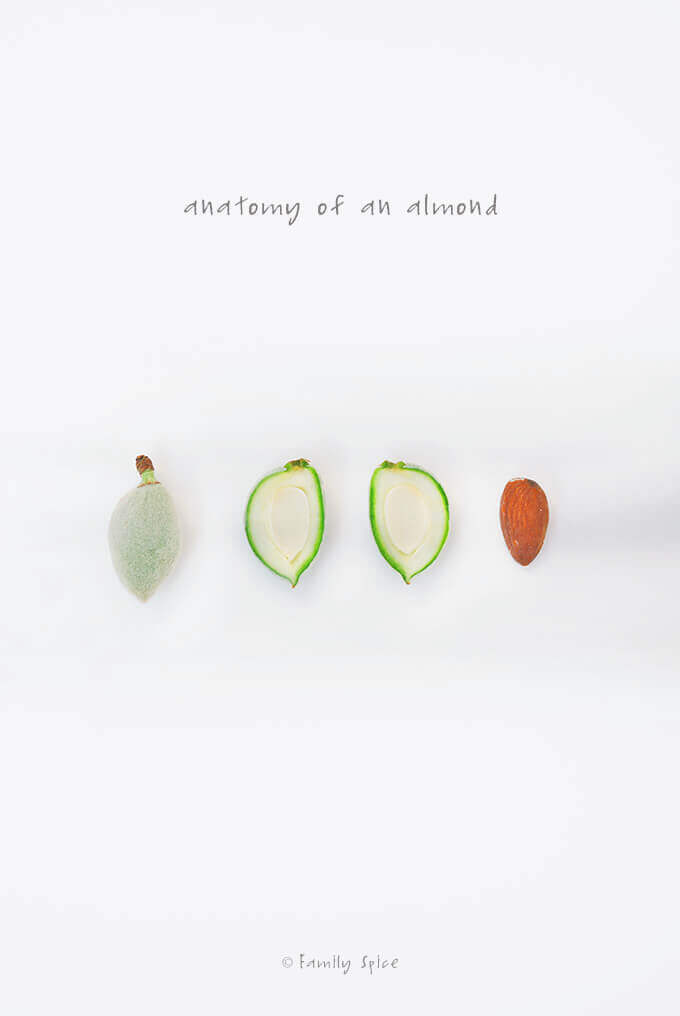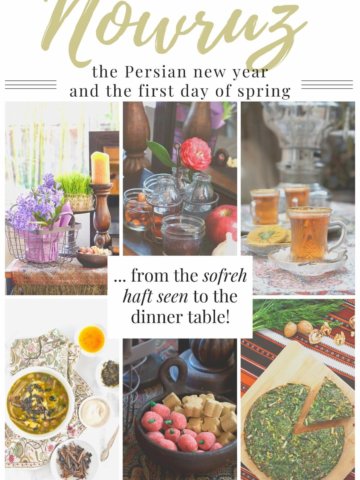All of the traditions and symbolism in a Persian wedding ceremony is explained: from the sofreh aghd and the aroosi, to the items on the sofreh, the sweets and everything else in between!
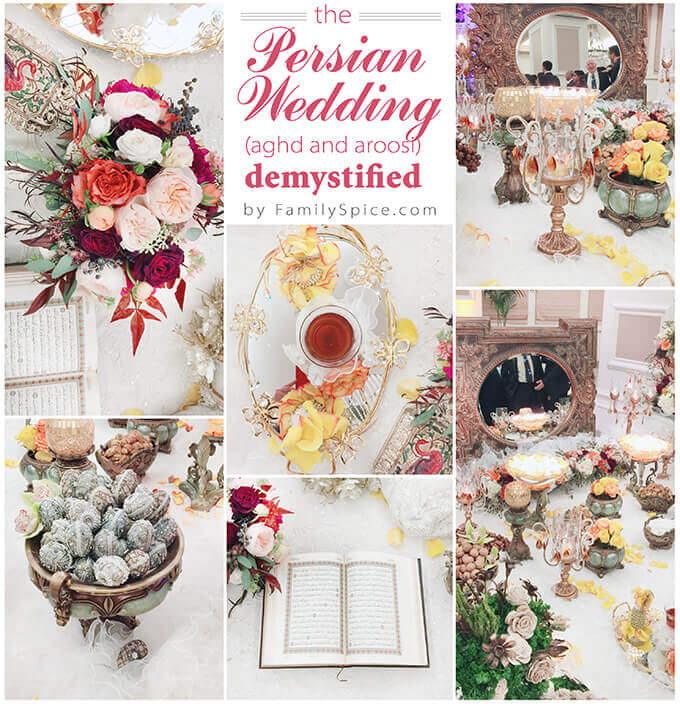
A wedding is always a beautiful occasion full of love, happiness and the merging of two families. It can be amazing, fun and totally stressful for the parties involved. But, one of my favorite wedding experiences is attending a Persian wedding.
There is tremendous history, symbolism and beauty found in a Persian wedding ceremony. These are traditions that are honored regardless of religion, too, which is key during these turbulent times in the middle-east. Why all this wedding talk?
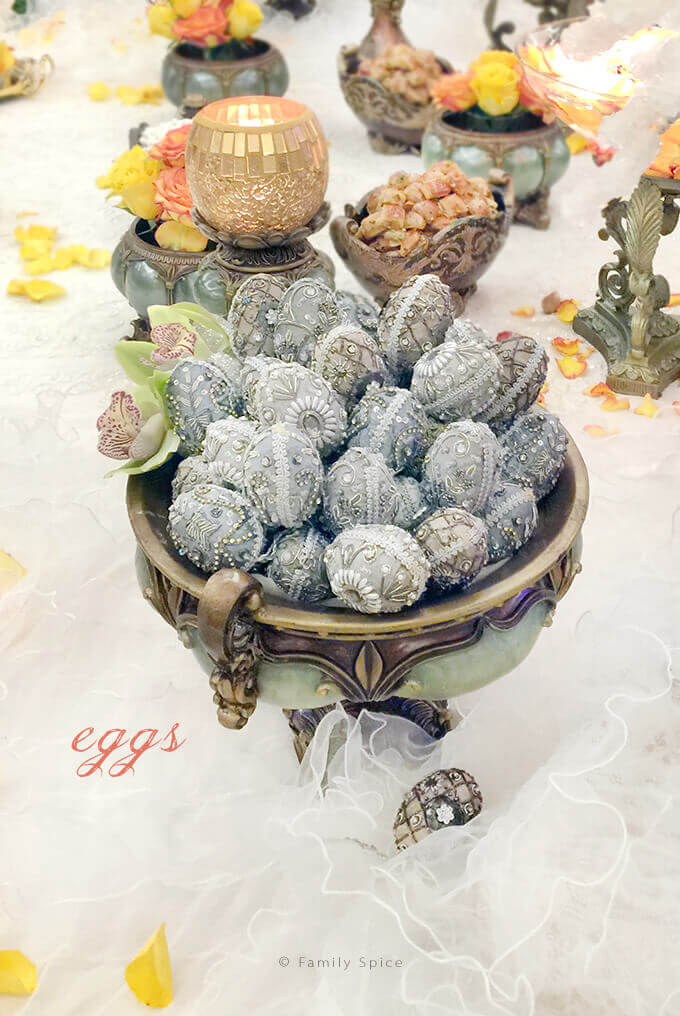
I’m certainly already married. But, my husband’s niece just got married, which is why (among other reasons) I have been neglecting my blog bit. While I’ve been editing pictures and home videos taken during this niece’s wedding, I thought, “Why not write about it and share this gorgeous ceremony with you?”
The Aghd and the Aroosi
A traditional Persian wedding is broken into parts: the aghd (the actual ceremony) and the aroosi (the reception). This is similar to western culture, except that in a Persian wedding, both the aghd and the aroosi can be held months apart.
But typically in modern times, they are held the same day. The aghd is usually a smaller ceremony, held for only family members and close friends to attend, while the aroosi is a larger party and celebration and more formal affair.
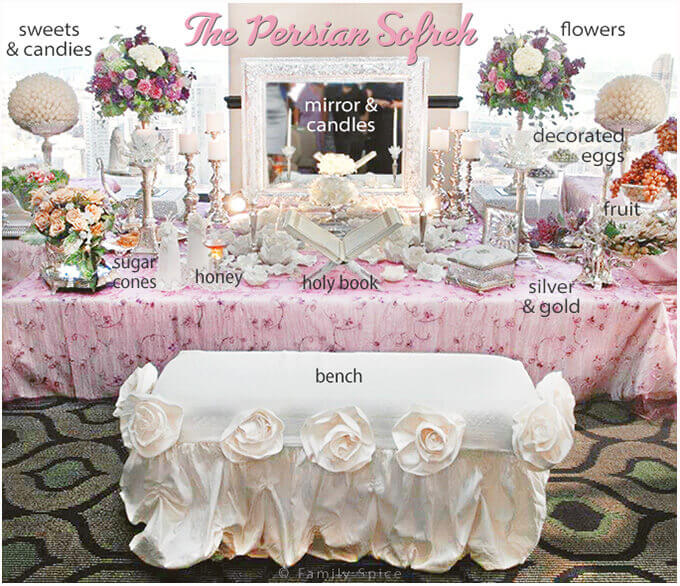
It is very common even today for the women who attend both ceremonies to wear two different outfits, one colorful and happy for the aghd and one more formal for the aroosi. Me? I’m Ms. Practical. I wore just one dress.
The Sofreh Aghd
The aghd is performed in front of a sofreh, a symbolic wedding spread placed on a beautifully arranged wedding cloth. The sofreh aghd is placed low to the ground or on the ground and the bride and groom sit on a bench facing the sofreh.
The sofreh has many symbolic items placed upon it. Most of the items listed below are required on the sofreh, but each region of Iran has certain items that are significant to them.
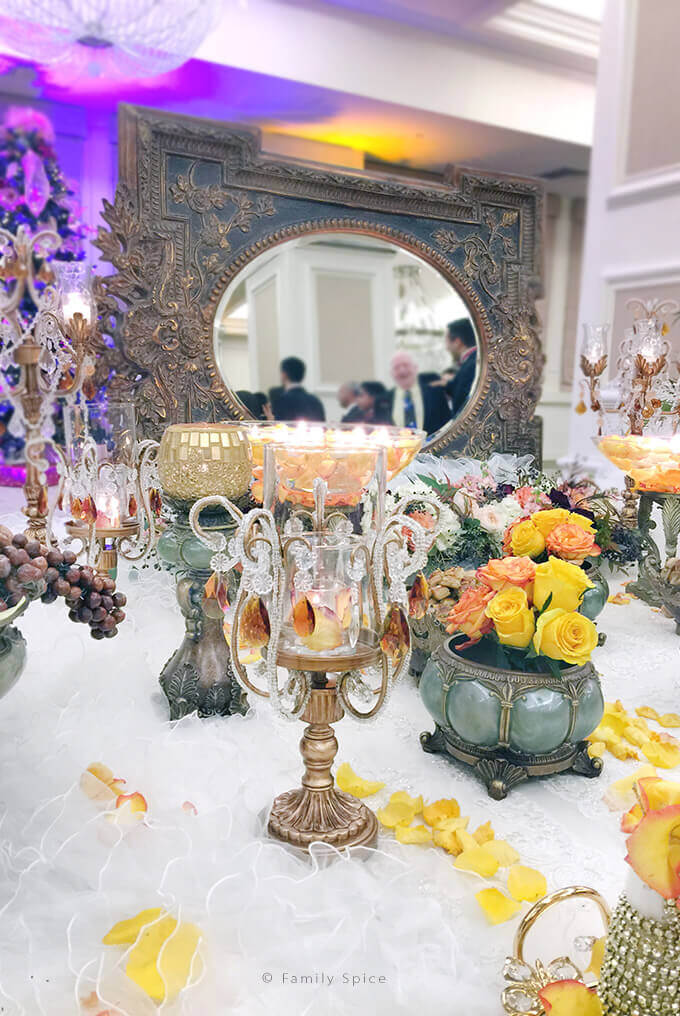
Mirror and Candlesticks
A mirror reflects what is before it, so symbolically it brings the couple abundance and brightness in their future. The candles bring passion and energy. As the story goes, the first thing the groom should see is the face of his beautiful bride reflected in the mirror, lit by the light of the candlesticks.
Both the mirror and the candlesticks were traditional gifts given from the groom to his bride, but today everything is coordinated in the colors and taste of both the bride and groom. The wedding mirror and candlesticks are also the first items to be brought to the newlyweds’ new home, bringing them the same love and good luck they received during their wedding.
Wedding Bench
During the ceremony, the bride and groom are sitting on the bench and facing the mirror and sofreh. Vows are exchanged here as they are surrounded by loved ones.

Sugar Cones (khaleh ghand)
While the ceremony is conducted, single women or female relatives of the couple hold a fine cloth, over the couple’s head. They alternate grinding the sugar cones over the bride and groom’s head, adding more sweetness to their life together.
When the bride is asked by the officiant conducting the ceremony if she will marry the groom, she is not supposed to answer the first time. A family member close to the bride answers, “She’s out picking flowers.” The bride is asked a second time, and she still is not supposed to answer. “She is putting her flowers in a vase.”
When the bride is asked a third time if she will marry the groom, then she answers,”Yes, with the permission of my parents and elders.” Everyone cheers and the sugar cones and cloth are placed back on the sofreh.
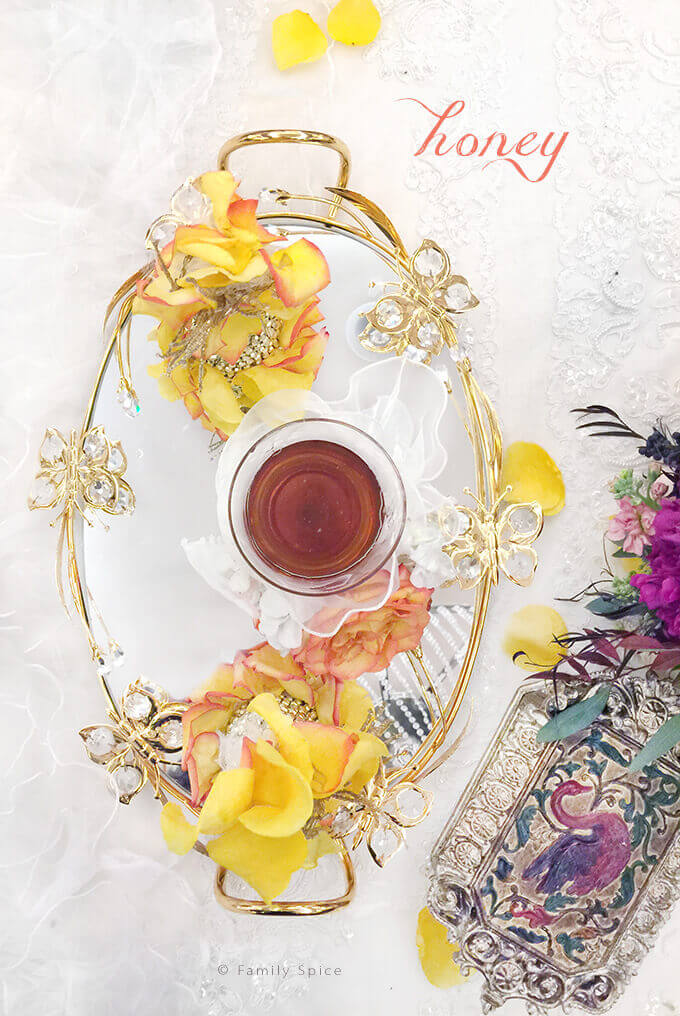
Honey
Once the bride and groom are pronounced man and wife, they exchange rings. A bowl of honey is presented to the couple, and the groom dips his finger into the honey and gives it to his bride. The bride reciprocates and offers her husband honey, as well. Again, the sweet of the honey symbolizes a sweet life together.
Other Items Found on the Sofreh Aghd
Each sofreh aghd is customized to the taste and customs of the families joining in marriage. This can vary on what region of Iran the families come from, the religions of each and general preferences. Below is a list of some more common items found on the sofreh.
Sweets and candies: for sweetness in life, and offered to guests after the ceremony.
Esfand: a Persian incense that is burned and used for thousands of years to ward away the ‘evil eye’.
Decorated eggs and nuts in their shells: for fertility
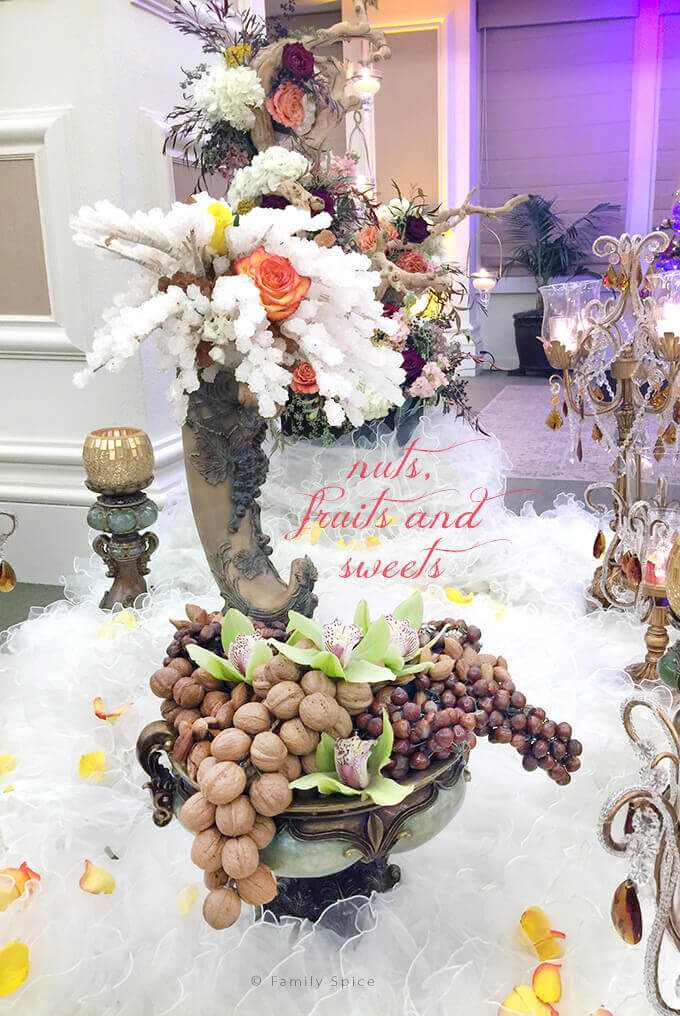
Gold and silver: for prosperity
Fresh flowers: to bring beauty in the couple’s life together
Fresh Fruit: for a joyous future
Rosewater: to perfume the air and bring beauty
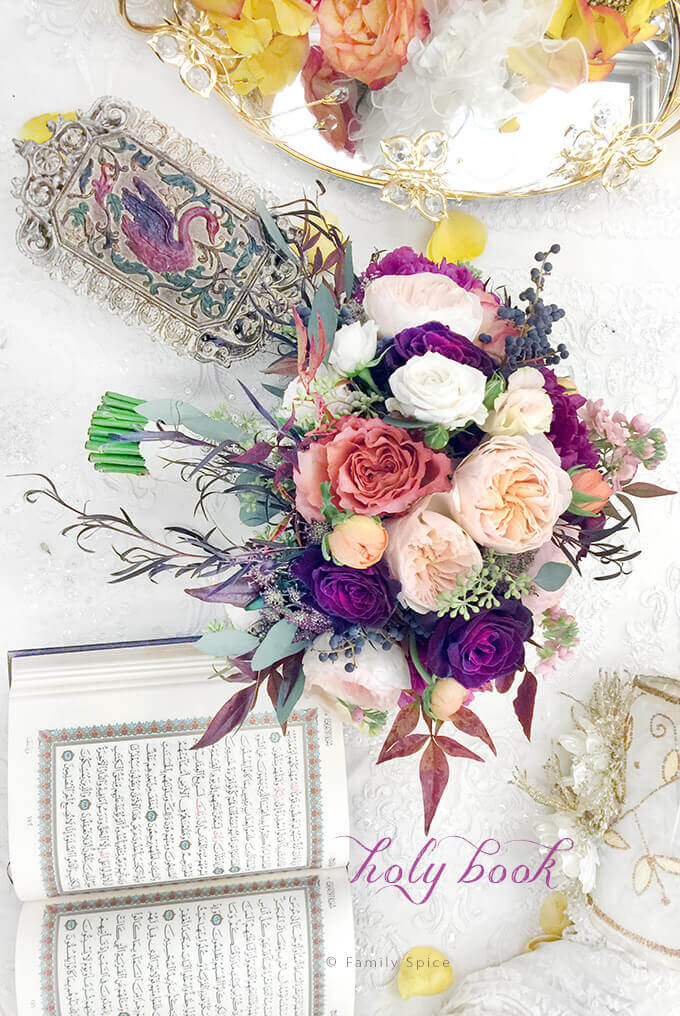
Holy book: from whichever religion the couple follows
Immediately after the ceremony is done, family members walk up to congratulate the bride and groom. Wedding gifts are usually given at this time, which is traditionally money and jewelry. Yes, my American friends enjoyed watching my family and in-laws adorn me with necklaces and bracelets!
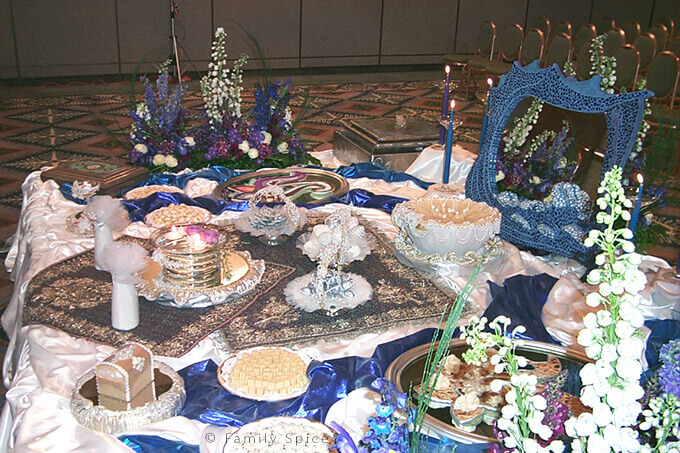
Just like its western counterparts, Persian weddings and the sofreh-e aghd can vary among style, ornateness and taste of the bride and groom. Some have a traditional feel, others more modern.
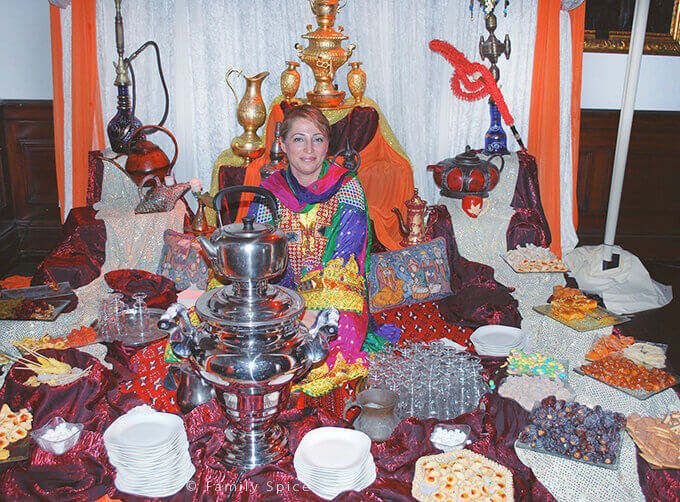
A current trend in Persian weddings, especially in Los Angeles, is to have a woman dressed in traditional village attire under a great canopy to serve tea in a samovar for the wedding guests to enjoy.
An assortment of Persian sweets and treats and also available for the guests to sample. It’s a fun novelty, especially when you have foreigners attending the wedding.
Traditional Foods Served at a Persian Wedding Reception (Aroosi)
Most traditional wedding receptions serve an over abundant supply of Persian deliciousness: stews like Gormeh Sabzi (Herb Stew) and Fesenjoon (Chicken with Pomegranate and Walnuts), are always popular, as well as chicken, filet mignon and ground beef kabob. The menu of the Persian wedding reception is set by the personal preference of the wedding party.
But the one dish that is ALWAYS served at a Persian wedding is Shirin Polo (Sweet Rice). Shirin Polo is basmati rice mixed in with candied orange peels, pistachios, carrots, raisins and almonds. This sweet rice continues with the symbolic theme of sweetening the life of the newly wed couple,
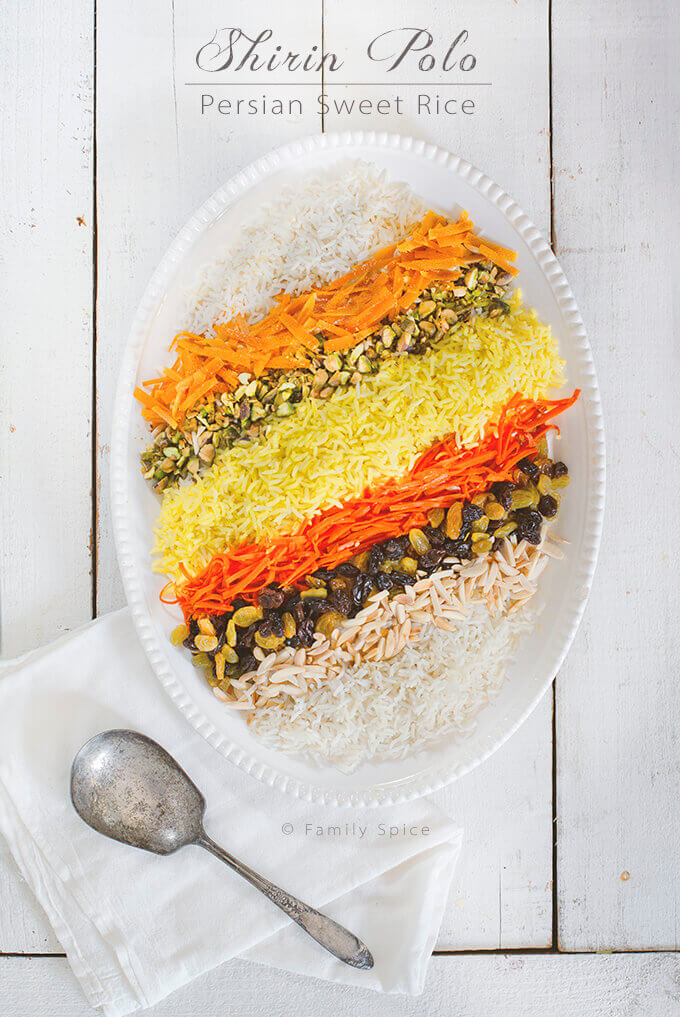
I hope you enjoyed this little journey down memory lane for me. And if you ever get invited to a Persian wedding, I hope you go and enjoy the adventure ahead. It is a very beautiful ceremony, no matter what religion the bride and groom hold. And I hope this explanation of the symbolic sofreh aghd helps you enjoy it even more.

